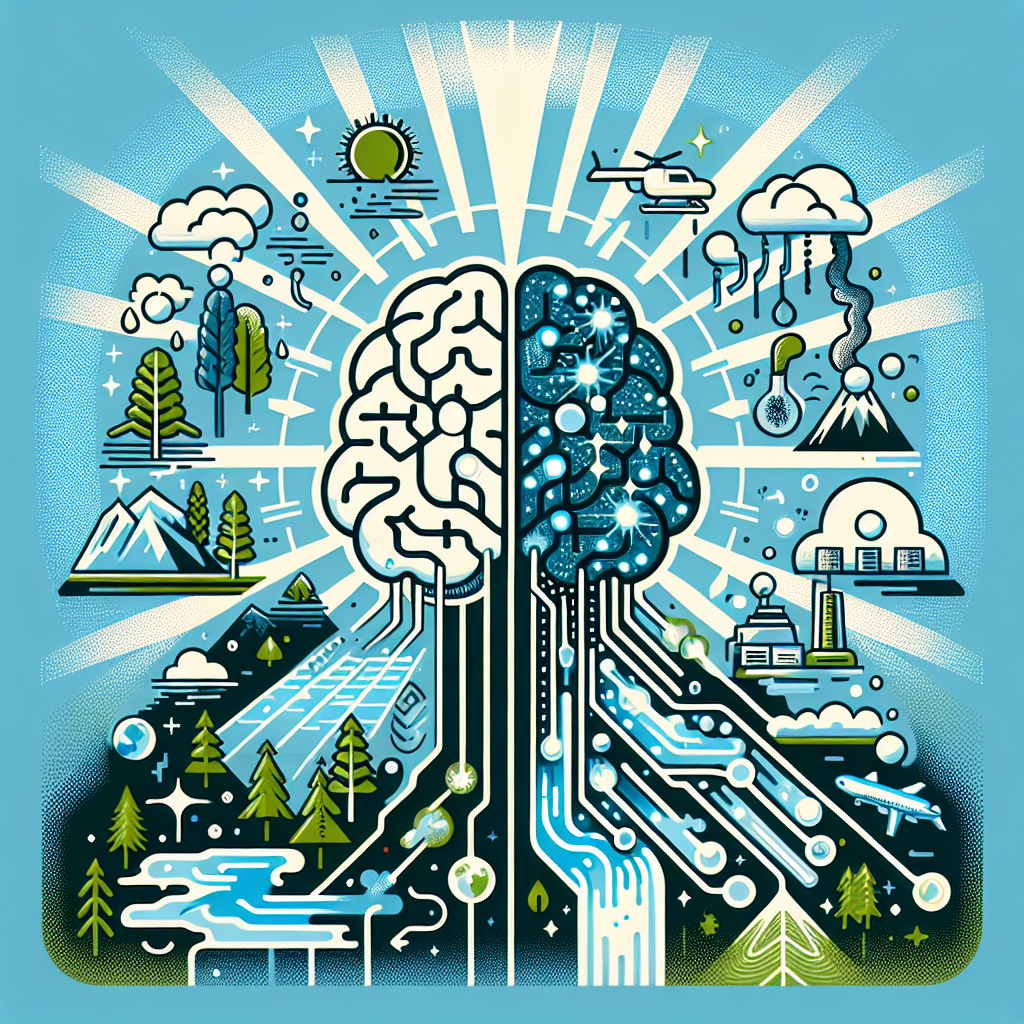Climate change is one of the most pressing issues facing the world today. With rising temperatures, melting ice caps, and extreme weather events becoming more frequent, the need to take action to combat climate change has never been more urgent. One technology that has the potential to play a significant role in addressing this global challenge is artificial intelligence (AI).
AI has the potential to revolutionize the way we address climate change by helping us better understand the complex interactions that drive climate systems, improve the efficiency of our energy systems, and develop innovative solutions to reduce greenhouse gas emissions. In this article, we will explore the impact of AI development on climate change and how this technology can be harnessed to create a more sustainable future for all.
Understanding the Role of AI in Addressing Climate Change
AI refers to the development of computer systems that can perform tasks that typically require human intelligence, such as learning, reasoning, problem-solving, and decision-making. In the context of climate change, AI can be used to analyze vast amounts of data from satellites, sensors, and other sources to better understand the impacts of climate change and predict future trends.
For example, AI can be used to analyze satellite images to monitor deforestation rates, track changes in sea levels, and detect patterns in extreme weather events. By processing and analyzing this data at a rapid pace, AI can provide valuable insights that can help policymakers, scientists, and other stakeholders make informed decisions to mitigate the impacts of climate change.
In addition to monitoring and predicting climate change, AI can also help optimize energy systems to reduce greenhouse gas emissions. By using AI to analyze data on energy consumption, weather patterns, and other factors, energy companies can optimize the production and distribution of energy to maximize efficiency and minimize emissions.
Furthermore, AI can be used to develop innovative solutions to reduce greenhouse gas emissions in sectors such as transportation, agriculture, and industry. For example, AI-powered transportation systems can optimize routes to reduce fuel consumption, while AI-powered agricultural systems can optimize crop yields while minimizing water usage and pesticide use.
Overall, the potential applications of AI in addressing climate change are vast and varied, and the development of this technology has the potential to significantly impact our ability to combat climate change and create a more sustainable future for all.
Challenges and Limitations of AI in Addressing Climate Change
While the potential of AI to address climate change is significant, there are also challenges and limitations that must be considered. One of the main challenges is the need for large amounts of high-quality data to train AI models effectively. Without access to reliable and accurate data, AI systems may produce inaccurate or biased results, leading to suboptimal decision-making.
Another challenge is the potential for AI to exacerbate existing inequalities and power imbalances. As AI becomes more prevalent in society, there is a risk that those with access to the technology and data will have a competitive advantage over those without, potentially widening the gap between rich and poor countries and exacerbating social and environmental injustices.
Furthermore, there are ethical concerns surrounding the use of AI in addressing climate change, such as issues related to privacy, transparency, and accountability. As AI systems become more complex and autonomous, there is a need to ensure that they are used in a responsible and ethical manner to prevent unintended consequences and harm to society.
Despite these challenges and limitations, the potential of AI to address climate change is significant, and with careful planning and regulation, this technology has the potential to play a key role in creating a more sustainable future for all.
Frequently Asked Questions (FAQs)
Q: How can AI help monitor and predict climate change?
A: AI can be used to analyze vast amounts of data from satellites, sensors, and other sources to monitor changes in the environment, track deforestation rates, and predict future trends in climate change.
Q: How can AI help optimize energy systems to reduce greenhouse gas emissions?
A: By analyzing data on energy consumption, weather patterns, and other factors, AI can help energy companies optimize the production and distribution of energy to maximize efficiency and minimize emissions.
Q: What are some examples of AI applications in addressing climate change?
A: AI can be used to develop AI-powered transportation systems to optimize routes and reduce fuel consumption, AI-powered agricultural systems to optimize crop yields and minimize water and pesticide use, and AI-powered weather forecasting systems to predict extreme weather events.
Q: What are the challenges and limitations of using AI to address climate change?
A: Challenges include the need for high-quality data, the potential for AI to exacerbate inequalities and power imbalances, and ethical concerns related to privacy, transparency, and accountability.
In conclusion, the development of AI has the potential to significantly impact our ability to address climate change and create a more sustainable future for all. By harnessing the power of AI to monitor and predict climate change, optimize energy systems, and develop innovative solutions to reduce greenhouse gas emissions, we can take meaningful steps towards mitigating the impacts of climate change and creating a more resilient and sustainable world for future generations.

